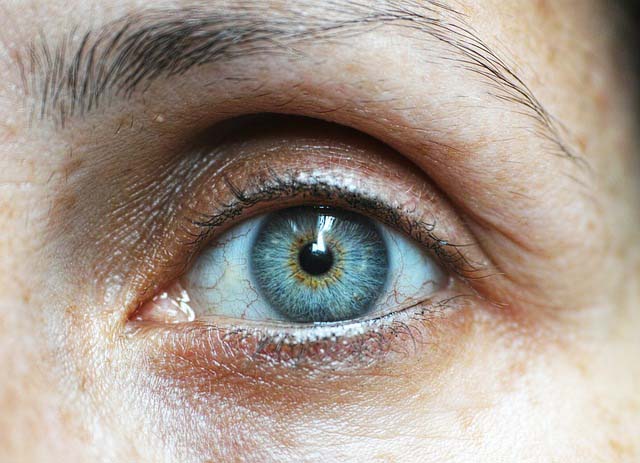New research from the University of California, Irvine, suggests that aging is an important component of retinal ganglion cell death in glaucoma, and that new pathways may be addressed when designing new treatments for glaucoma patients. .
Stress-induced aging in the mouse eye Summary Aging, a universal process that affects all cells in an organism, is a major risk factor for a group of neuropathies called glaucoma, in which elevated intraocular pressure is one of the known stresses affecting the tissue. Our understanding of the molecular impact of aging on the stress response in the retina is very limited; therefore, we developed a new mouse model to address this question experimentally. Here we show that susceptibility to the stress response increases with age and is based on chromatin level. We demonstrate that ocular hypertension activates a stress response that is similar to natural aging and involves the activation of inflammation and senescence. We show that multiple instances of pressure elevation cause aging of the young retina as measured at the transcriptional and DNA methylation level and are accompanied by local histone modification changes. Our data show that repeated stress accelerates the appearance of aging characteristics in tissues and suggest chromatin modifications as the key molecular components of aging. Finally, our work further emphasizes the importance of early diagnosis and prevention, as well as age-specific management of age-related diseases, including glaucoma. |
Comments
The study, titled "Stress-induced aging in the mouse eye ," was published in Aging Cell . Together with colleagues, Dorota Skowronska Krawczyk, PhD, assistant professor in the Departments of Physiology and Biophysics and Ophthalmology and professor in the Center for Translational Vision Research at the UCI School of Medicine, describes the transcriptional and epigenetic changes that occur in retinal aging. The team shows how stress, such as elevated intraocular pressure (IOP) in the eye, causes retinal tissue to undergo epigenetic and transcriptional changes similar to natural aging. And, how in young retinal tissue, repetitive stress induces accelerated aging characteristics, including accelerated epigenetic age.
Aging is a universal process that affects all cells in an organism. In the eye, it is a major risk factor for a group of neuropathies called glaucoma. Due to increasing aging populations worldwide, current estimates show that the number of people with glaucoma (aged 40 to 80 years) will increase to more than 110 million by 2040.
"Our work emphasizes the importance of early diagnosis and prevention, as well as age-specific management of age-related diseases, including glaucoma," said Skowronska-Krawczyk. "The epigenetic changes we observed suggest that changes in the level of chromatin are acquired cumulatively, after several cases of stress. This provides us with a window of opportunity for the prevention of vision loss, as long as the disease be recognized in time."
In humans, IOP has a circadian rhythm. In healthy individuals, it typically ranges from 12 to 21 mmHg and tends to be higher in approximately two-thirds of individuals during the nocturnal period. Due to IOP fluctuations, a single IOP measurement is often insufficient to characterize the true pathology and risk of disease progression in patients with glaucoma. Long-term IOP fluctuation has been reported to be a strong predictor of glaucoma progression. This new study suggests that the cumulative impact of IOP fluctuations is directly responsible for tissue aging.
"Our work shows that even moderate hydrostatic IOP elevation results in retinal ganglion cell loss and corresponding visual defects when performed in aged animals," Skowronska-Krawczyk said. "We continue to work to understand the mechanism of cumulative changes in aging to find potential targets for therapy. We are also testing different approaches to prevent the accelerated aging process that results from stress."
Researchers now have a new tool to estimate the impact of stress and treatment on the aging state of retinal tissue, which has made these new discoveries possible. In collaboration with the Clock Foundation and Steve Horvath, PhD, of Altos Labs, who pioneered the development of epigenetic clocks that can measure age based on methylation changes in tissue DNA, the researchers were able to show that elevation Repetitive and mild IOP can accelerate the epigenetic age of tissues.
"In addition to measuring vision decline and some structural changes due to stress and potential treatment, we can now measure the epigenetic age of retinal tissue and use it to find the optimal strategy to prevent vision loss in aging" said Skowronska-Krawczyk.
This research was funded in part by the National Institutes of Health, the Polish Science Foundation, and the European Union under the European Regional Development Fund. The authors would like to acknowledge the support of the Research Foundation to Prevent Blindness of the UCI Department of Ophthalmology.
Conclusions
In summary, we have shown that stress susceptibility changes with age and is epigenetically preconditioned . Among the pathways that are activated by elevated intraocular pressure (IOP) in the 18-month retina are inflammation and senescence. Additionally, the use of a senolytic drug can protect RGCs from death. The robust response in the aged retina was driven by epigenetic changes that we were able to reproduce by performing repetitive stress on the young tissue. Finally, we have shown that multiple instances of stress in 3-month-old animals cause changes in transcriptional and DNA methylation patterns that indicate accelerated features of aging. This process was accompanied by the gain of the activating histone mark in the regulatory elements of the upregulated genes, implying that the molecular mechanism of aging is regulated at the level of chromatin modification. This, in turn, suggests that the rate of aging can be modified using drugs that affect enzymes involved in chromatin modifications. Finally, these results emphasize the importance of early diagnosis and prevention , as well as age-specific management of age-related eye diseases, including glaucoma.
Source : Science News
















